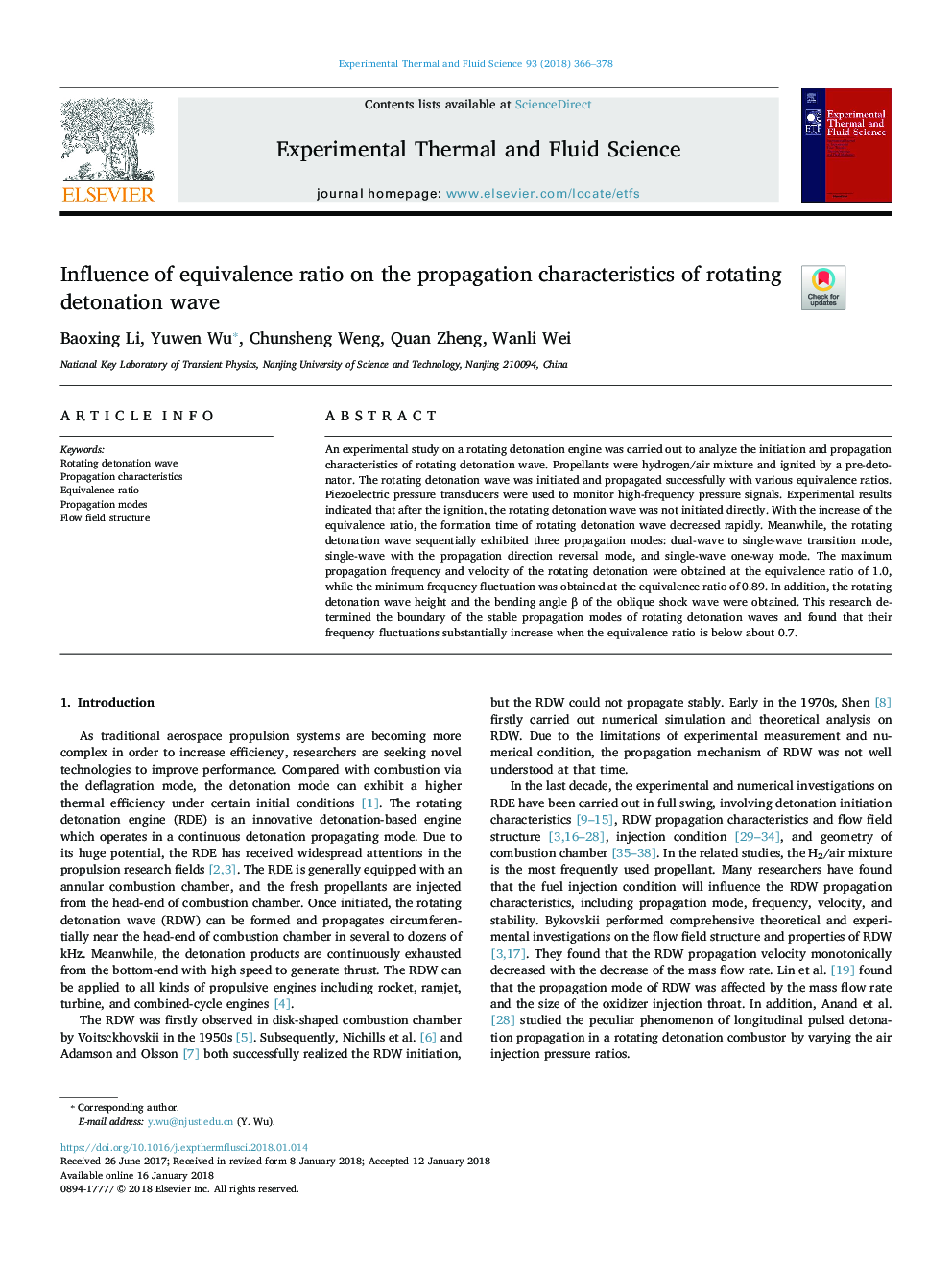| Article ID | Journal | Published Year | Pages | File Type |
|---|---|---|---|---|
| 7051835 | Experimental Thermal and Fluid Science | 2018 | 13 Pages |
Abstract
An experimental study on a rotating detonation engine was carried out to analyze the initiation and propagation characteristics of rotating detonation wave. Propellants were hydrogen/air mixture and ignited by a pre-detonator. The rotating detonation wave was initiated and propagated successfully with various equivalence ratios. Piezoelectric pressure transducers were used to monitor high-frequency pressure signals. Experimental results indicated that after the ignition, the rotating detonation wave was not initiated directly. With the increase of the equivalence ratio, the formation time of rotating detonation wave decreased rapidly. Meanwhile, the rotating detonation wave sequentially exhibited three propagation modes: dual-wave to single-wave transition mode, single-wave with the propagation direction reversal mode, and single-wave one-way mode. The maximum propagation frequency and velocity of the rotating detonation were obtained at the equivalence ratio of 1.0, while the minimum frequency fluctuation was obtained at the equivalence ratio of 0.89. In addition, the rotating detonation wave height and the bending angle β of the oblique shock wave were obtained. This research determined the boundary of the stable propagation modes of rotating detonation waves and found that their frequency fluctuations substantially increase when the equivalence ratio is below about 0.7.
Related Topics
Physical Sciences and Engineering
Chemical Engineering
Fluid Flow and Transfer Processes
Authors
Baoxing Li, Yuwen Wu, Chunsheng Weng, Quan Zheng, Wanli Wei,
